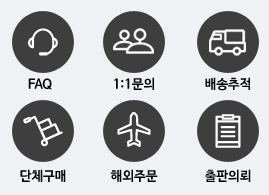- 목차 -
PART 1. 환자의 선택 Patient Selection 25
1. 사회적 여견(Social Conditions) 27
2. 경제적 여건(Economic Conditions) 27
3. 정신적 상태(Psychological Conditions) 27
4. 신체적 여건(Indication) 28
1) 나이(Age) 28
2) 전신 및 다른 부위의 건강 상태(Physical condition) 30
(1) 전신적인 건강 상태(general condition) 30
(2) 비만(obesity) 31
(3) 신경 및 근육 계통의 상태(neuromuscular condition) 31
(4) 척추의 상태(spinal condition) 31
(5) 고관절 및 다른 부위의 상태(hip or other joints condition) 32
(6) 혈관의 상태(vascular condition) 32
3) 무릎의 상태(Knee joint condition) 32
(1) 증상(symptom) 32
(2) 기능(function) 33
(3) 질병의 종류(causative disease) 및 경중(severity) 33
4) 술자의 경험(Surgeon’s experience) 37
5. 수술의 금기(Contraindication) 37
PART 2. 치환물의 선택 Implant Selection 43
1. 재질(Material) 45
1) 금속(Metal) 45
(1) stainless steel 46
(2) cobalt chromium 46
(3) titanium 46
(4) zirconium 46
(5) tantalum 47
(6) 금속 간의 상호 작용(interaction between metals) 47
2) 도기(Ceramic) 47
3) Polyethylene(Ultra-High Molecular Weight Polyethylene : UHMWPE, PE) 48
(1) 역사(history) 48
(2) 인공슬관절에서의 polyethylene(PE) 48
4) 시멘트(Bone cement, Polymethylmethacrylate, PMMA) 52
(1) 시멘트의 역할 및 그에 따른 이론 52
(2) 성분(composition) 53
(3) 열의 발생(heat generation) 54
(4) 굳어가는 시간에 따른 변화(stage of cementing) 54
(5) 강도(strength) 55
2. 고안(Design) 55
1) 개요(Introduction) 55
2) 해부학 및 생역학(Anatomy and biomechanics) 56
3) 고안에 관여하는 요소 59
(1) 치환물의 구조적 적합성(congruency) 59
(2) 치환물 간의 운동 제한성(constraint) 59
(3) 고정 방법에 따른 고안(design according to fixation method) 73
3. 각 부분에 대한 고안(Design for Each Component) 75
1) 대퇴부(Femur) 75
(1) 전체적인 모양(shape) 75
(2) PS 형 79
2) 경골부(Tibia) 80
(1) 전체적인 모양(shape) 80
(2) 주대(stem) 81
(3) PE과 경골 치환물의 고정 방법 82
3) Spacer(Polyethylene liner) 84
(1) 전체적인 모양(shape) 84
(2) Post의 형태 및 위치 85
4) 슬개부(Patella) 85
(1) 전체적인 모양(shape) 85
(2) 구성(composition) 85
(3) 고정의 방법 86
(4) 위치에 따른 고안 86
5) 크기간의 호환성(Size matching) 86
6) 선택 사양(Option) 87
(1) 금속 보강물(metal augment) 87
(2) ChoRen(Correction by Height and Orientation Renovation) PAD 88
(3) trabecular system 89
(4) 연장 주대(extension stem) 89
(5) 주문 제작형 인공치환물(custom-made prosthesis) 90
7) 굴곡 운동 범위를 증가시키기 위한 고안(Design to increase flexion motion) 90
4. 수술 기구(Surgical Instrument) 92
1) 인공 슬관절에 사용하면 편리한 기구(General instruments for TKA) 92
(1) plastic cover 92
(2) retractor 92
(3) plateau protecter 93
(4) patella tendon protecter 94
(5) femoral lifter 94
(6) lamina spreader 95
(7) 양면 hammer(bifacial hammer) 95
(8) 핀 제거기(pin extractor) 95
(9) Lewin clamp 95
(10) patellar component remover 97
(11) 골 채취기(bone harvester) 97
(12) Gigli saw guider 98
2) 수술 과정에 따라 고안된 기구(Instruments for TKA specific procedure) 98
(1) 대퇴부(femur) 99
(2) 경골부(tibia) 99
(3) 슬개부(patella) 100
(4) 균형(balancing)을 위한 기구 100
(5) 기타의 기구(miscellaneous instrument) 100
PART 3. 수술 전 준비 Preparation for Operation 109
1. 수술 전 점검(Admission Check-up) 111
1) 문진(History taking) 111
2) 진찰(Physical examination) 111
3) 수술 전 검사(Preoperative study) 112
2. 최종 결정(Decision) 112
3. 술후 결과 판정을 위한 연구(Outcome study) 115
1) HSS score 115
2) 슬관절 점수(Knee Society score;KSS) 117
3) Knee Society Total Knee Arthroplasty Roentgenographic Evaluation System 119
(1) 방법(method)119
(2) 기록(recording)120
4) 슬개-대퇴부 점수(Patellofemoral scoring system)121
5) WOMAC score(The Western Ontario and MacMaster Universities Osteoarthritis index score) 122
6) KOOS(Knee Injury and Osteoarthritis Outcome Score)123
7) SF-36(36 Item Short-Form Health Survey) 혹은 MOS(Medical Outcomes Study) SF-36 123
8) 한국형 슬관절 점수125
9) Oxford Knee Score(OKS)126
10) Forgotten Joint Score126
11) 기타의 평가 방법127
(1) 만족도(satisfaction)127
(2) High Activity Arthroplasty Score(HAAS) 127
(3) 생존율(survival rate)127
4. 환자의 교육(Education) 128
5. 수술 준비(Preoperative Preparation) 128
1) 수술 동의서(Consent form)128
2) 전신적인 준비(Medical preparation)128
3) 마취 준비(Preparation for anesthesia)130
4) 무릎의 준비(Knee joint preparation)130
PART 4. 수술 술기 Surgical Technique 135
1. Drape 137
2. 수술 도달법(Approach) 138
1) 피부 절개(Skin incision)138
(1) 정중 절개(midline incision)140
(2) 내측방 절개(paramedial incision)140
(3) 외측방 절개(lateral incision)141
2) 관절 절개(Arthrotomy)141
(1) 내측방 관절 절개술(paramedial arthrotomy)141
(2) 광근하 관절 절개술(subvastus arthrotomy)142
(3) 광근중간 관절 절개술(midvastus arthrotomy)142
(4) medial trivector retaining 관절 절개술143
(5) 외측방 관절 절개술(lateral arthrotomy)144
3) 추가적인 방법(Ancillary procedure)145
(1) 대퇴 직근 절제술(rectus snip)145
(2) VY 사두고건 성형술(VY quadricepsplasty, quadriceps turn down)과 Z-성형술(Z-plasty) 146
(3) 경골 조면 절골술(tibia tubercle osteotomy)146
(4) 골막 박피술(subperiosteal peel)147
3. 연부 조직의 처리(Soft Tissue Procedure) 149
1) 십자인대의 처리(Cruciate ligament treatment)149
2) 연골판의 처리(Meniscectomy)149
3) 연부 조직의 이완(Soft tissue release)149
4) 지방 조직의 제거(Fat pad removal)149
5) 관절 후방부 연부 조직의 제거(Removal of posterior soft tissue)150
4. 골 절제 및 골 조직의 처리(Osteotomy &; Bone Preparation) 152
1) 골 절제(Osteotomy)152
2) 정렬과 관련된 이론적 근거(Rationale for alignment)153
(1) 역학적 정렬(mechanical alignment)153
(2) 운동학적 정렬(kinematic alignment)155
3) 역학적 정렬을 맞추기 위한 절제 방법(Resection technique for mechanical alignment) 155
(1) 전통적 방법(classic method)155
(2) 해부학적 방법(anatomic method)156
4) 부위별 골 절제 및 고정을 위한 준비 158
(1) 대퇴골(femur)158
(2) 경골(tibia)166
(3) 슬개골(patella)172
5. 균형(Balancing) 177
1) 굴곡 및 신전 균형(Flexion &; extension gap balancing)177
(1) 불균형의 원인177
(2) 검사(check-up)177
(3) 균형의 방법(balancing technique)178
2) 내외측 균형(Medio-lateral balancing)180
(1) 균형의 중요성180
(2) 불균형의 정의(definition of imbalance)181
(3) 균형의 방법(balancing technique)182
3) 슬개 대퇴 관절의 균형(Patellofemoral balancing)187
(1) 부정 정렬(malalignment)의 요인(cause)187
(2) 점검(check-up)189
(3) 교정의 방법(correction)190
6. 고정(Fixation) 191
1) 고정의 방법(Method)191
2) 시멘트 방법(Cementing technique)192
(1) stage에 따른 방법192
(2) 과정(procedure)193
7. 닫기(Closure) 194
1) 지혈(Hemostasis)195
2) 배액관의 삽입(Hemovac insertion)195
3) 봉합의 방법(Suture)195
8. 기타 사항(Miscellaneous Technique) 197
1) 관절 운동을 늘리는 방법(Methods increasing ROM)197
(1) 관절 운동의 중요성197
(2) 해부학 및 생역학(anatomy and biomechanics)197
(3) 관절 운동에 관여되는 요인(factors affecting ROM)198
2) Mobile bearing joint에서의 술기(Techniques in mobile bearing joint) 200
3) 후방십자인대 보완형의 술기(Techniques in posterior cruciate substituting type) 201
4) 전후방(양) 십자 보존형(BCR)의 술기(Techniques in bicruciate retaining type) 201
PART 5. 특수한 경우에 있어서의 인공관절술 TKA in Specific Condition 211
1. 골 결손(Bone Defect) 213
1) 개요(Introduction)213
2) 분류(Classification)213
3) 진단(Diagnosis)215
4) 치료의 원칙(Principles of treament)215
5) 복원의 방법(Reconstruction method)217
(1) 시멘트(cementing)217
(2) 금속 보강물(metal augmentation)217
(3) 골 이식(bone graft)219
6) 부위에 따른 수술 방법224
(1) 경골부의 골 결손(tibial defect)224
(2) 대퇴부의 골 결손(femoral defect)224
(3) 슬개부의 골 결손(patellar defect)229
2. 변형(Deformity) 234
1) 관절내 변형(Intra-articular deformity)234
(1) 내반 변형(varus deformity)234
(2) 외반 변형(valgus deformity)236
(3) 굴곡 구축(flexion contracture)239
2) 관절외 변형(Extra-articular deformity)243
(1) 관절내 교정(intra-articular correction)243
(2) 관절외 교정(meta-diaphyseal correction)245
3. 강직성 관절(Ankylosis) 247
1) 수술의 적응(Indication)247
2) 예후와 관련된 사항(Prognostic factor)247
3) 수술의 방법(Surgical technique)248
4. 기타의 상황(Miscellaneous Condition) 및 질환 251
1) 골감소증(Osteopenia)251
2) 이전의 무릎 수술(Previous knee operation)253
(1) 관절경 수술 후 상태(post-arthroscopy state)253
(2) 슬관절 인대 수술 후 상태(post-ligamentous operation state)253
(3) 골절 수술 후 상태(post-fracture operation state)253
(4) 근위 경골 절골술 후 상태(post-high tibial osteotomy state)255
3) 고관절 강직(Ankylotic hip)258
4) 기타 질환(Miscellaneous disease)258
(1) 류마티스 관절염(rheumatoid arthritis)258
(2) 신경병성 관절염(Charcot joint)260
(3) 파젯씨 병(Paget’s disease)260
(4) 혈우병성 관절염(hemophilic arthritis)261
(5) 소아마비 후유증(polio sequelae)261
5. Tumor Prosthesis 262
1) 적응(Indication)262
2) 종류 및 구성(Type)263
3) 수술 술기(Surgical technique)264
(1) 생검 및 조직의 제거(biopsy and excision)264
(2) 치환술(Implantation)265
4) 결과(Result)267
PART 6. 한구획 치환술 Unicompartmental Arthroplasty 273
1. 한구획 치환술(Unicompartmental Arthroplasty : UKA) 275
1) 개요(Introduction)275
(1) 한구획 치환술과 근위 경골 절골술과의 비교(UKA vs high tibial osteotomy)275
(2) 한구획 치환술과 전치환술의 비교(UKA vs TKA)275
2) 치환물(Implant)276
(1) 역사(history)276
(2) 고안(design)277
3) 적응(Indication) 및 금기(Contraindication)278
4) 수술 술기(Surgical technique)280
(1) 내측 한 구획 치환술(medial UKA)280
(2) 외측 한구획 치환술(lateral UKA)286
5) 수술 후 조치(Postoperative care)288
6) 합병증(Complication)289
7) 예후(Prognosis)289
2. 슬개 대퇴 성형술(Patellofemoral Arthroplasty: PFA) 291
1) 개요(Introduction)291
2) 고안(Design)291
3) 적응(Indication)292
4) 수술 술기(Surgical technique)292
5) 수술 후 조치(Postoperative care)293
6) 합병증(Complication)293
7) 예후(Prognosis)294
3. 내과부 및 슬개 대퇴부 성형술(Bicompartmental Knee Arthroplasty) 294
PART 7. 수술 후 조치 Postoperative Management 299
1. 수술 후 처치(Postoperative Care) 301
1) 초기(수술 직후)302
(1) 회복실에서의 처치302
(2) 병실에서의 처치302
2) 중기(입원 기간)307
(1) 전신 상태(general condition)307
(2) 환부의 치료(wound care)308
(3) 재활 요법(rehabilitation)309
3) 후기(퇴원 후)312
2. 교육(Education) 312
3. 경과 추시(Follow-up) 315
PART 8. 합병증 Complication 319
1. 전신적인 합병증(General Complication) 321
1) 심부 정맥 혈전증(Deep vein thrombosis: DVT)321
(1) 원인(etiology)321
(2) 빈도(incidence)321
(3) 증상(symptom)322
(4) 진단(diagnosis)322
(5) 예방(prevention)323
(6) 치료(treatment)326
2) 지방 색전증(Fat embolism syndrome)327
2. 국소적인 합병증(Knee Joint Complication) 327
1) 통증(Pain)327
(1) 빈도327
(2) 통증의 원인328
(3) 진단330
(4) 치료331
2) 운동 제한(Motion limitation)332
(1) 원인(cause)332
(2) 치료(treatment)333
3) 불안정성(Instability) 및 탈구(Dislocation)334
(1) 원인(cause)335
(2) 치료(treatment)337
4) 혈관의 합병증(Vascular complication) 및 구획증후군(Compartment syndrome)337
5) 신경 마비(Nerve palsy)338
6) 신전 기전의 합병증(Complication of extensor mechanism)339
(1) 전방 동통(anterior knee pain)339
(2) 신전 기전의 파열(rupture of extensor mechanism)340
(3) 슬개골 아탈구 및 탈구(patella subluxation or dislocation)341
(4) 슬개골 외측면 충돌 증후군(lateral patella facet impingement syndrome) 343
(5) 슬개골 덜컹 증후군(patellar clunk syndrome)344
(6) 슬개골 무혈성 괴사(avascular necrosis of patella)344
(7) 슬개 치환물의 마모 및 해리(wear and loosening)344
7) 마모(Wear)345
(1) 원인(cause)346
(2) 증상 및 진단(symptom and diagnosis)346
(3) 치료(treatment)347
8) 골 용해(Osteolysis)347
(1) 원인(cause)347
(2) 빈도(incidence)348
(3) 진단(diagnosis)349
(4) 치료(treatment)349
9) 비감염성 해리(Aseptic loosening)349
(1) 원인(cause)349
(2) 진단(diagnosis)350
(3) 치료(treatment)351
10) 치환물의 파손(Component breakage)351
11) 이소성 골화(Heterotopic ossification) 352
12) 종창(Swelling)352
13) 창상의 문제(Wound problem) 및 표재성 감염(Superficial infection)353
14) 심부 감염(Deep infection or periprosthetic joint infection : PJI) 356
(1) 분류356
(2) 빈도356
(3) 요인(factor)356
(4) 진단(diagnosis)357
(5) 예방(prevention)360
(6) 치료(treatment)361
15) 치환물 주위 골절(Periprosthetic fracture)366
(1) 원인(cause)366
(2) 분류(classification)368
(3) 치료(treatment)370
(4) 결과(result)375
PART 9. 재치환술 Revision Arthroplasty 391
1. 개요(Introduction) 393
2. 감염이 없는 재치환술(Revision of Aseptic Failure) 394
1) 수술 전 점검(Preoperative check up)394
(1) 전신 상태(general condition)394
(2) 원인의 분석(analyis of cause)394
(3) 무릎 상태의 점검(preoperative knee joint assessment)395
2) 수술 과정(Surgical procedure)395
(1) 치환물의 선택(implant selection)396
(2) 수술 도달법(approach)397
(3) 치환물의 제거(implant removal)397
(4) 활막 및 연부 조직의 처리(soft tissue treatment)402
(5) 골 절제 및 골 복원(osteotomy and bone reconstruction)402
(6) 균형(balancing)405
(7) 고정(fixation)407
3. 한구획 치환술의 재치환술(Revision of UKA) 408
4. 감염에 의한 재치환술(Revision of Infected TKA) 409
1) 한 번에 시행하는 재치환술(One stage revision)410
2) 두 번에 시행하는 재치환술(Two stage revision)410
(1) 일차 수술(1st operation)410
(2) 이차 수술(2nd operation) 414
PART 10. 선택적 수술법 Optional Technique 421
1. Computer를 이용한 수술법(Computer Assisted Orthopedic Surgery: CAOS) 423
1) 개요(General concept)423
2) 역사(History)424
3) 종류(Type)424
(1) 수행 행위에 따른 분류424
(2) 영상의 필요성에 따른 분류431
4) 적응(Indication)436
5) 임상 결과(Clinical result)436
6) CAOS의 미래437
2. 최소 침습적 수술(Minimally Invasive Surgery: MIS) 438
1) 개요(General concept)438
2) 역사(History)438
3) 적응(Indication) 438
4) 수술 술기(Surgical technique)438
(1) 도달법438
(2) 골 절제440
(3) 균형(balancing)440
(4) 고정(fixation)440
5) 수술 후 조치(Postoperative care)440
6) 임상 결과(Clinical result)440
등록된 상품이 없습니다.
사용후기가 없습니다.
상품문의가 없습니다.



